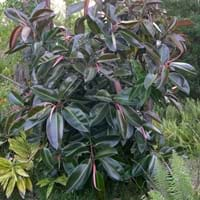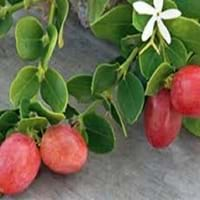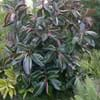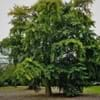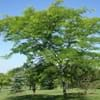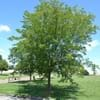Life Span
Perennial
Perennial
Origin
Southern Asia, Southeastern Asia, India, Nepal
Central Asia, Southern Asia, Western Ghats, India
Types
not available
congesta, paucinervia
Number of Varieties
Not Available
Habitat
agricultural areas, Along Railroads, Coastal Regions, Forests, Roadsides, Scrubs, Suburban areas
Fertile bottom land, moist forests, Temperate Regions, Tropical Forests
USDA Hardiness Zone
10-11
Not Available
Sunset Zone
H1, H2, 16, 17, 19, 20, 21, 22, 23, 24
Not Available
Habit
Upright/Erect
Upright/Erect
Flower Color
Not Available
Pale White, White
Flower Color Modifier
Bicolor
Bicolor
Fruit Color
Yellow, Yellow green
Purple, Black
Leaf Color in Spring
Red, Dark Green, Crimson
Green
Leaf Color in Summer
Red, Dark Green, Crimson
Green
Leaf Color in Fall
Red, Dark Green, Crimson
Green
Leaf Color in Winter
Red, Dark Green, Crimson
Light Green
Leaf Shape
Elliptic to oblong
Oval
Plant Season
Spring, Summer, Fall, Winter
Spring, Summer, Fall
Sunlight
Full Sun, Partial Sun, Partial shade
Full Sun, Partial Sun, Partial shade
Type of Soil
Loam, Sand
Loam
The pH of Soil
Acidic, Neutral, Alkaline
Acidic, Neutral, Alkaline
Soil Drainage
Well drained
Well drained
Bloom Time
Not Available
Spring
Tolerances
Not Available
Drought
Where to Plant?
Ground
Ground
How to Plant?
Seedlings, Vegetative Reproduction
Seedlings, Stem Cutting
Plant Maintenance
Medium
Medium
Watering Requirements
Keep ground moist, Requires a lot of watering
Keep the ground moist but not water-logged
In Summer
Lots of watering
Lots of watering
In Spring
Moderate
Moderate
In Winter
Average Water
Average Water
Soil pH
Acidic, Neutral, Alkaline
Acidic, Neutral, Alkaline
Soil Type
Loam, Sand
Loam
Soil Drainage Capacity
Well drained
Well drained
Sun Exposure
Full Sun, Partial Sun, Partial shade
Full Sun, Partial Sun, Partial shade
Pruning
Prune for shortening long shoots
Prune if you want to improve plant shape, Remove dead leaves
Fertilizers
don't fertilize in winter
Compost, fertilize in growing season
Pests and Diseases
Mealybugs, Red blotch, Scale, Spider mites, Yellow Leaves
Aphids, Earwigs, Insects, Mildew, Red blotch, Rust, sawflies
Plant Tolerance
Not Available
Dry soil, Heat And Humidity
Flowers
Insignificant
Insignificant
Flower Petal Number
Not Available
Single
Foliage Texture
Bold
Medium
Foliage Sheen
Glossy
Matte
Attracts
Not Available
Birds, Butterflies, Fruit Bats
Allergy
Asthma, breathing problems
Eczema, Mouth itching, Throat itching
Aesthetic Uses
Showy Purposes
Not Available
Beauty Benefits
Not Available
good for lips, Remove blemishes
Environmental Uses
Air purification, soil erosion prevension on hill slopes
Air purification, Food for animals, Food for birds, soil stabilisation
Medicinal Uses
Not Available
Anemia, Diuretic, Potassium, Rich in Iron, Vitamin C
Part of Plant Used
Latex
Fruits, Leaves
Other Uses
Making rubber, Making tyres
Added to salads, Cosmetics, Culinary use, Used as a nutritious food item, Used As Food, Used for its medicinal properties
Used As Indoor Plant
Yes
No
Used As Outdoor Plant
Yes
Yes
Garden Design
Container, Feature Plant, Houseplant, Shade Trees, Tropical
Edible, Fruit / Fruit Tree, Hedges
Botanical Name
FICUS elastica
Carissa carandas
Common Name
Rubber Plant
Black Currant
In Hindi
रबड़ का पौधा
करोंदा, कालि मैना
In German
Ficus elastica
Carandas
In French
Ficus elastica
karondas
In Spanish
ficus
karondas
In Greek
ελαστικός φίκος
karondas
In Portuguese
fábrica de borracha
karondas
In Polish
gumy roślin
karondas
In Latin
Flexilis herba
karondas
Phylum
Tracheophyta
Magnoliophyta
Class
Magnoliopsida
Magnoliopsida
Order
Rosales
Gentianales
Family
Moraceae
Apocynaceae
Clade
Angiosperms, Eudicots, Rosids
Angiosperms, Asterids, Eudicots
Tribe
Ficeae
Not Available
Subfamily
Not Available
Not Available
Number of Species
Not Available
Not Available
Importance of Ficus Elastica and Karonda
Want to have the most appropriate plant for your garden? You might want to know the importance of Ficus Elastica and Karonda. Basically, these two plants vary in many aspects. Compare Ficus Elastica and Karonda as they differ in many characteristics such as their life, care, benefits, facts, etc. Every gardener must at least have the slightest clue about the plants he wants to plant in his garden. Compare their benefits, which differ in many ways like facts and uses. The medicinal use of Ficus Elastica is Not Available whereas of Karonda is Anemia, Diuretic, Potassium, Rich in Iron and Vitamin C. Ficus Elastica has beauty benefits as follows: Not Available while Karonda has beauty benefits as follows: Not Available.
Compare Facts of Ficus Elastica vs Karonda
How to choose the best garden plant for your garden depending upon its facts? Here garden plant comparison will help you to solve this query. Compare the facts of Ficus Elastica vs Karonda and know which one to choose. As garden plants have benefits and other uses, allergy is also a major drawback of plants for some people. Allergic reactions of Ficus Elastica are Asthma and breathing problems whereas of Karonda have Eczema, Mouth itching and Throat itching respectively. Having a fruit bearing plant in your garden can be a plus point of your garden. Ficus Elastica has no showy fruits and Karonda has no showy fruits. Also Ficus Elastica is not flowering and Karonda is not flowering . You can compare Ficus Elastica and Karonda facts and facts of other plants too.
